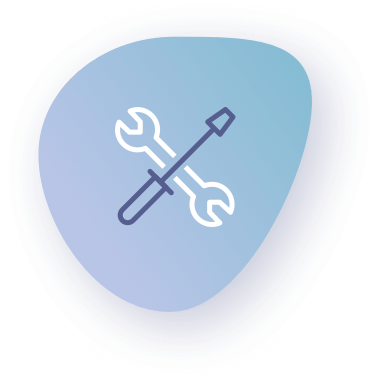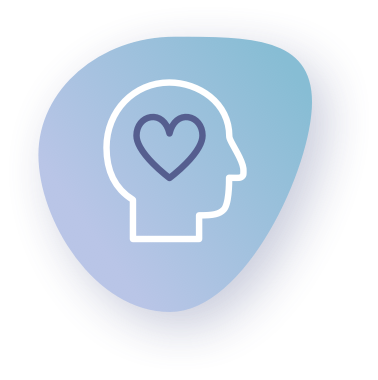There are many different types of customers that a support manager may encounter. We looked at the most common personas in support and how to handle them.
Customer support teams interact with a lot of customers. Support is the frontline for every company, which means they’re usually the first to hear about issues, feedback, and overall sentiment.
As a support manager, you get to meet many of these different types of customers, both directly and indirectly. Some will be a lot of fun to interact with. Others, not so much. But that’s part of what makes the job interesting and enjoyable. And knowing some best practices for supporting the different types of customers you meet will make your job all the more enjoyable.
Note: I realize I’m painting with broad brush strokes here. Every customer is a unique individual, but when you (or your team) are interacting with hundreds or thousands each week, you begin to see similarities across your customer base.
Let’s dive into 6 types of customers you meet as a support manager and how to best support each of them.
Start your day
with great
quality
content
1. The new customer
In a growing business, you’ll see a constant influx of new customers. They’re typically inquisitive and eager to learn. Although they sometimes are hesitant because a new product means changing habits and behaviors, you’ll often find that these customers are the most engaged. They want to figure out how your product or service can make them more successful as quickly as possible.
Sometimes new customers can experience buyer’s remorse, especially if your product comes with a high price tag or a long contract. At a minimum, keep in mind that they’re typically keeping their eyes open for anything that might not meet their needs. If they have doubts, any issues will quickly aggravate those doubts and make them second guess their purchasing decision. That’s why it’s best to make them feel extra special.
In summary, new customers are an incredible chance to deliver on your sales and marketing promises and start building customer loyalty from day one. But if you drop the ball, you’ll create a bad first impression that can be hard to recover from.
💡 Customer support best practices for new customers
The first step in creating a great experience for new customers is to build an effective onboarding program for them. There are two main ways to do this.
- You can create a team focused entirely on onboarding. This team would proactively reach out to new customers and walk them through what they need to know about successfully using your product or service.
- You can roll this into your support team’s responsibilities. If you use technology to create a digital in-app onboarding experience, your support team should be prepared to field questions and help new customers overcome obstacles.
It’s also important to prepare your support team to be the “second first impression” for your company. Regardless of what type or how great your onboarding program is, you’ll still receive general support tickets from new customers. It’ll be their first interaction with your team, and it’s the best chance for your customer support to shine.
Train and empower your support team to go above and beyond for customers. This will drive positive experiences across the board, including with your new customers.
It’s also a great idea to help your support team recognize when a customer is new and then to tailor the experience for them. You can often call out new customers within your CRM so your support team notices it as soon as they pull up the customer’s account. When your team sees a new customer, coach them on good questions to ask and helpful resources to share to set up new users for success.
2. The former customer
Former customers are the people who have canceled their subscriptions to your product or service. As a support manager, you’re most likely to have gotten involved with a former customer as they were canceling or through an escalated case.
Supporting paying customers is definitely the top priority for you and your support team, but taking care of customers as they’re canceling (or after they’ve canceled) leaves an open door for them to return at some point in the future.
💡 Customer support best practices for former customers
If your support team gets involved in the cancellation process, one of the most useful things they can do is to help your company understand why a customer is leaving. As they cancel, record those reasons. Cancel reasons are invaluable to your business (just like other types of customer insights, including CSAT, CES, and NPS).
The other important thing to remember when supporting canceling or former customers is to try and end things on a positive note. While an easy and helpful cancellation process may not prevent a customer from churning (although it can!), it can lead to a more positive perception of your brand (due to things like recency bias).
3. The angry customer
Everyone who works in support has had to deal with an angry customer at one time or another. The angry customers are also the ones we tend to talk (vent?) about the most. Their stories travel fast around the office (or on Slack).
While blatant disrespect or abusive language towards your support team shouldn’t be tolerated, it’s best to remember that angry customers are angry for a reason. They may not realize how your product works, or they could have a legitimate issue that they feel is taking too long to address.
Either way, dealing with angry customers is a normal, understandable, and sometimes uncomfortable part of being a support manager. So it’s important to have a strategy.
💡 Customer support best practices for angry customers
Empathy is the key to supporting angry customers.
Keep in mind that in most cases an angry customer is not angry with you or your team as individuals, but with the situation as a whole. They’ve been disappointed. Maybe they’ve felt ignored.
Do your best to remain calm and put yourself in their shoes. Many times angry customers just want to feel heard—ideally by someone they believe can help them.
Train your team on key customer service skills for dealing with angry customers: de-escalation, displaying empathy and taking ownership of issues.
And if an angry customer gets escalated to you, you should aim to back up your team, show empathy, and find opportunities to solve this particular situation and prevent similar situations in the future.
4. The talkative customer
The talkative customer is a fun one. Fun, but challenging.
Talkers will always choose to call your support team (instead of using other support channels). They enjoy telling stories, engaging in small talk, and are usually in a pretty jovial mood. They don’t hesitate to tell you about their issues or how their day is going.
It may be a pleasure to get them on the phone, but they can also take up a lot of support time and resources. They may ask how your day is going, talk about the weather, or ask about your favorite sports team.
As a customer support manager, you may encounter the talker more indirectly—although don’t be surprised if you get an escalated call from a talker for the sole purpose of giving positive feedback about your team.
💡 Customer support best practices for talkative customers
It can be tough to get a word in edgewise with a talkative customer.
The key to successfully dealing with these customers is to engage with them while also keeping the conversations on track. Probing questions are key to this approach: the better you are at probing for their issue, the quicker you’re able to resolve it.
As they share their stories, affirm that you’re listening while also using those moments as opportunities to ask good questions. You can also direct the conversation a little bit more forcefully when needed. Try phrases like:
- “That sounds amazing! So how can I help today?”
- “Thanks for sharing. I’ve got a few questions about your issue.”
- “I’d like to take care of this, but I need [XYZ] before I can do that. Can you please help me understand those things?”
Sometimes talkers will distract your team so much they won’t actually be able to troubleshoot the issue at hand. In those cases you can place the customer on hold—even if you have to interrupt them—by politely saying, “I’m really sorry to interrupt you, but do you mind if I place you on a quick hold to look into your issue?”
5. The easygoing customer
The easygoing customer is the type of customer that doesn’t seem to let anything bother them. They could have the biggest issue you can think of with your product, but they’ll calmly tell you what’s going on so you can fix it.
Easygoing customers are hard to fluster. Typically, they’re understanding individuals who realize that issues happen in any business. They may also understand that your support team isn’t usually the one who causes issues, they’re just the ones tasked with solving them.
In short, easygoing customers understand that stuff happens and appreciate that you’re there for them when things go awry.
💡 Customer support best practices for the easygoing customer
Easygoing customers like knowing you’re working on their issues. The best approach to helping them is to set clear expectations and deliver on your promises.
Whether it’s a specific timeline for a fix or a simple, “I’m not sure how long this will take but I’ll make sure I’ll follow up,” instilling confidence is the key to supporting easygoing customers. They’re easygoing because they have confidence that they’re being taken care of, so instill that confidence as you speak with them (and teach your team to do the same).
6. The loyal customer
Loyal customers are the cream of the crop. They’re the Promoters in your NPS results, the most vocal of your customers, and the quickest to try new products and services. They’re not just users of your product—they’re believers and fans of your brand.
These customers give you extra grace. They’re the ones who know you’ll make it right if they have a bad interaction because you’ve built up trust and loyalty over time.
As a support manager, you may get escalations from loyal customers, but you’re more likely to interact with them indirectly through coaching your team. Loyal customers are loyal because of many great interactions over time, and as you train your team to consistently deliver great customer service, you’re investing in those customer relationships.
Keep in mind that your most loyal customers can sometimes create friction by asking for special treatment. Be mindful of these situations and approach them with caution. You want them to be loyal because you’ve always given them great support and your product or service meets their needs, not because you’re giving them special treatment.
💡 Support best practices for the loyal customer
Loyal customers are great sources of feedback—they’re often most likely to say yes if you want input on a new idea or initiative.
Your loyal customers are also most likely to become advocates for your brand. While this isn’t just a support responsibility, support teams can have a positive impact on growth by partnering up with marketing and customer success teams to source case studies and reviews. You know the customers who love your product and support experience—who better to ask for referrals or a review?
Another best practice is to make sure these customers are noted in your CRM. While they may not necessarily always be on your premium product or paying the most money, you want to keep them loyal and satisfied. Calling them out with a flag in your CRM makes it easy for your customer service team to see them. These simple flags can trigger your support teams to take extra care when serving these customers.
Supporting your customers
Managing customer support isn’t always a cakewalk, but it’s guaranteed to be fulfilling and interesting. As a support manager, you get to interact with dozens or hundreds of people from many different backgrounds and organizations.
There isn’t always a cut-and-dry playbook for every situation you’ll encounter, but keeping these support best practices in mind can help you adapt on the fly.
Want to get to know your customers better? You should check out a free trial of Nicereply. It’s the easiest way to get real-time customer feedback so you can take consistent action to improve your customer experience across the board.












